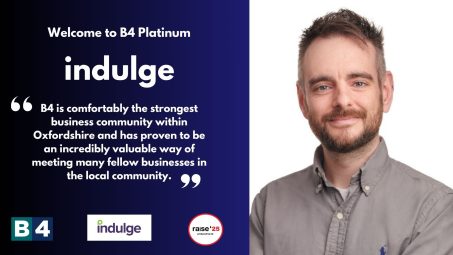
Writing great content for your website
As one of the most effective methods of growing audience engagement, developing your brand presence, and driving sales, content marketing is a mission-critical growth method for most businesses.
But where do you start? What do you write about? It can be a daunting, not to mention time-consuming task. But creating high quality blog posts and content for your website doesn’t have to be arduous, it just requires a series of defined processes that you can tweak as you go.
In this article, we look at how to find content topics, how to research your keywords and how to ensure you are providing true value for your reader.
Finding valuable content topics
What makes website content “valuable” is completely dependent on your industry, business goals and what you’re hoping to achieve. However, there are some basics that are applicable across the board to make sure your content is set up to succeed from the off.
1. Know your target audience
The golden rule of content is knowing who your target audience is. You need to get into the mindset of your ideal reader. The questions that matter will be dependent on your industry, but getting down to the nuts and bolts of their pain points, what they’re looking for and why will inform your content topics.
For example, you might have created a chatbot to help businesses convert leads. In this example, you’re going to want to target the decision maker, this may be an influential member of the marketing team, or the head of marketing themselves. So, what pain points do you think they might have that your chatbot would fix? Perhaps they’re acquiring leads but seeing a low conversion rate. Perhaps they’ve had staffing difficulties so there aren’t enough customer service resources.
Once you understand your target audience’s motivations, you can reverse-engineer it to decide what they would be searching for. In this example, it might be a generic guide such as ‘how to convert leads?’. Alternatively, they may be in the buying stage, looking for ‘24/7 chatbot solutions’. Whoever your target audience is, you need to get into their mindset and understand what they want, why they want it and how you can help them achieve it.
2. Do your keyword research
Once you know your target audience’s pain points and motivations, you can start keyword research. You don’t need to have completed a Digital Marketing degree to grasp the basics. There’s an endless amount of digital resources at your fingertips and this knowledge will help you create effective content. Guides such as Backlinko’s Definitive Guide to Keyword Research can help walk you through the process step-by-step without getting overwhelmed by information. Understanding search volume, niche topics and searcher intent will get you well on your way to writing content that hits the mark.
Remember to objectively evaluate sites you’ll be competing with for certain keywords, phrases or terms. For example, if you’re trying to compete for ‘running shoes’, you’ll be up against some tough competition on the SERPs (Search Engine Results Pages) in the form of established brands such as Nike and Adidas. This is where the value of your niche and angle comes in, as detailed by the SERP Stat Blog’s post on niche ranking factors. The more targeted your content is, the higher chance it has of ranking and bringing your target audience to your site. If you’re looking at rankings specifically, it’s worth reading Backlinko’s complete list of Google’s 200 ranking factors, which has also been updated for 2021.
Equally, don’t stuff your keywords throughout your content. At this stage, most people know a thing or two about digital marketing tactics, or at least content that reads like it’s spam. Shoehorning keywords in where they don’t sound natural will only make your reader distrustful of your expertise, which will inevitably lead to an increased bounce rate. Put your readers first by being careful and intentional with your keyword placement.
3. Provide value
At the heart of your content is value. If you’re not providing value and a clear takeaway in your content, then it won’t be effective, no matter how many keywords you add. The reason content does well in the long run is because it provides answers. A Backlinko study found that “Writing comprehensive, in-depth content can help pages rank higher in Google.” We can assume that comprehensive content dives deeper into topics, which should answer the searcher’s original question and more.
If you give them what they need for free, helping them get from A (pain point) to B (pain free), they’ll be more incentivised to find out more about who you are and how you can ultimately help them. Should you get stuck at any point during the process of content creation, always come back to your target audience. What will they find valuable? What answers do they need? What expertise can you provide at no cost?
The roundup
How long it takes to write high quality blog posts is dependent on how much initial brainstorming you do, how in-depth your keyword research goes and the amount of revisions you complete. But regardless of the time it takes, high quality content is worth more than the words on the page; It can help create new leads, customers and add emails to your mailing list. Using the tips we’ve outlined, you should be able to start creating content that helps your readers and generates valuable business opportunities.
If you are looking for tailored digital support, you can get in touch with our expert team. Whatever your goals are, we can help you achieve them and improve your digital growth in the process.
More in Web & Social

Indulge upgrade to Platinum Membership
Local digital agency Indulge have enjoyed a great first year back in the B4 community, so much so that director Paul Wood has upgraded to Platinum Membership. Here we find out more about Paul and Indulge.

How do I hire a web development agency?
It can be tough finding a good web development agency – mainly because there are so many agencies out there, and it can be hard to know which one is the right fit for your project.

How do I choose a good web design agency?
The first thing to appreciate when choosing a good design agency is that there is no one-size-fits-all solution, so you’ll need to find an agency that can tailor its services to meet your unique requirements.
From this author

Greener websites: taking the green initiative in digital
Like all businesses, we’re working hard to reduce our environmental impact. The time for ‘business as usual’ is behind us, and at Versantus we want to help our customers reduce the carbon footprint of their digital assets. Of course there’s a moral obligation to look after our planet, but, if you rely heavily on digital channels to do business, there’s a financial benefit too.

Women in Tech: our Senior Developer’s perspective
As a progressive organisation, we’re always on the lookout for diverse voices and upcoming talent; a diverse team brings different experiences and ideas, providing the opportunity for further learning, collaboration and improvement. But it’s impossible to ignore the limited representation of women and minority voices and glaring gender bias in the development world.

Core Web Vitals: what you need to know and how to...
The rise in slow-loading websites, intrusive pop ups and unexpected page shifts has led Google to crack down on poor user experience (UX). With the inclusion of Core Web Vitals to Google’s ranking factors, knowing how your website scores and improvements you can make will help you stay afloat once the upcoming updates take effect.

